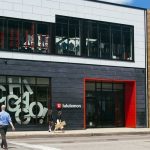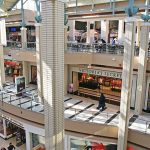Half-Moon Outfitters is a bit more Green after a ten-month renovation on a building that will serve as its new distribution center. Consultants to the project say the building is expected to become one of the first in the Southeast to attain the U.S. Green Building Councils LEED (Leadership in Energy and Environmental Design) Platinum certification, the highest level awarded. There are currently about 20 LEED Platinum projects in the U.S. and none in South Carolina.
Nathan Gauthier, coordinator of the High Performance Building Service for the Harvard Green Campus Initiative, who acted as LEED consultant for the project notes, “As building Green becomes more common across the country, its great to see a small, privately-held business go the extra mile and make this kind of investment to protect the environment.”
LEED for New Construction and Major Renovations (LEED-NC 2.2) is the Green building rating system designed to guide and distinguish high-performance commercial and institutional projects, and projects must attain a minimum of 52 of the 69 criteria to achieve the Platinum designation. On the application, Half Moon Outfitters indicated that 54 of the 69 criteria had been completed. All components of construction are evaluated and documented throughout the process and final certification could take several months.
“Given the environmental aspect of our business, we were compelled to do it and to do it right. Its an expensive endeavor, but the benefits to the environment, and over time to the bottom line, make it more than worth the effort and investment,” said Beezer Molten, owner of Half-Moon Outfitters.
The new distribution center includes rainwater collection for irrigation and commode flushing, a 4.2-kilowatt solar energy system, and paints and finishes manufactured without volatile organic compounds. Desks are made of a rapidly renewable material known as Dakota Burl, a pressed plywood type board made from the discarded shells of sunflower seeds. Much of the wood needed is regionally harvested native South Carolina cedar and pine. Salvaged, recycled or sustainable harvested materials make up a large part of the remaining construction materials.









